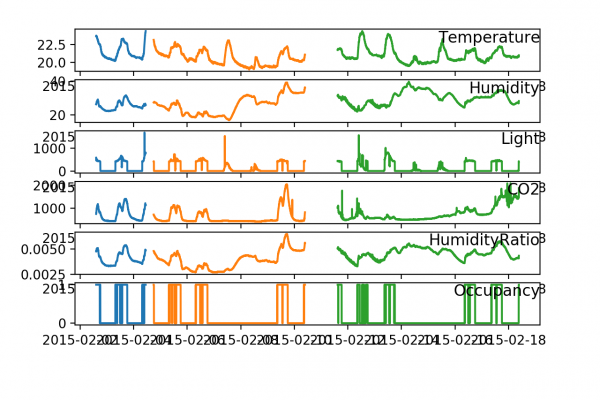How to Predict Room Occupancy Based on Environmental Factors

Last Updated on August 28, 2020
Small computers, such as Arduino devices, can be used within buildings to record environmental variables from which simple and useful properties can be predicted.
One example is predicting whether a room or rooms are occupied based on environmental measures such as temperature, humidity, and related measures.
This is a type of common time series classification problem called room occupancy classification.
In this tutorial, you will discover a standard multivariate time series classification problem for predicting room occupancy using the measurements of environmental variables.
After completing this tutorial, you will know:
- The Occupancy Detection standard time series classification problem in machine learning.
- How to load and visualize multivariate time series classification data.
- How to develop simple naive and logistic regression models that achieve nearly perfect skill on the problem.
Kick-start your project with my new book Deep Learning for Time Series Forecasting, including step-by-step tutorials and the Python source code files for all examples.
Let’s get started.
- Update Oct/2018: Updated description of the source of the dataset (I really messed that up), thanks Luis Candanedo.
Tutorial Overview
This tutorial is divided into four parts; they are:
- Occupancy Detection Problem Description
- Data Visualization